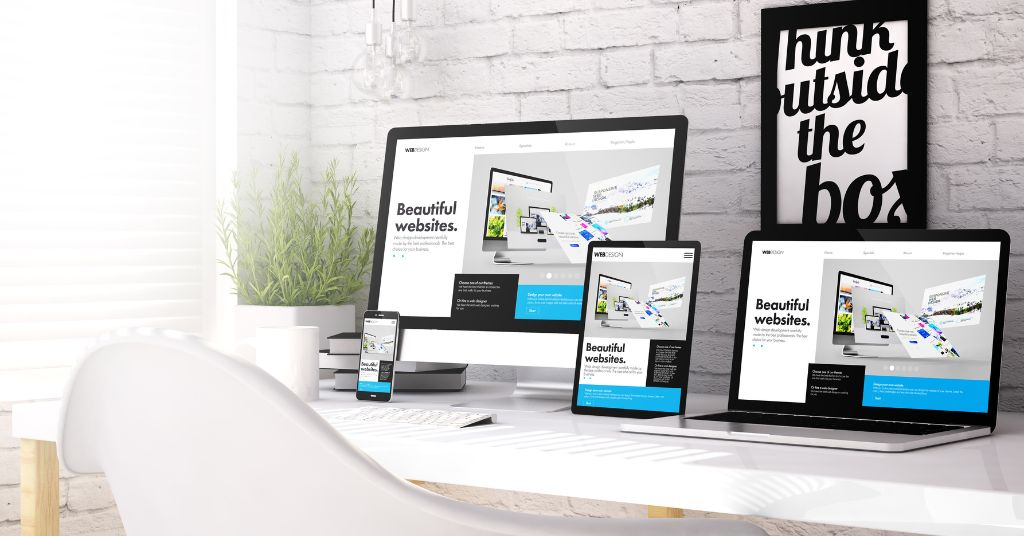In today’s digital age, where nearly every business or personal brand requires an online presence, the importance of web design cannot be overstated. A well-designed website is often the first impression a customer gets of your brand, making it essential to not only make it visually appealing but also user-friendly, responsive, and functional. If you’re someone who’s passionate about design or looking to enhance your career as a web designer, it’s time to start thinking about ways to improve your web design skills. Enhance your web design skills and stay ahead of the curve with these valuable tips and resources.
Understanding the Foundations of Web Design
Before diving into advanced tools and techniques, it’s crucial to understand the basic principles of web design. Every successful website is built on a foundation that includes a few key design principles: layout, color, typography, user experience (UX), and user interface (UI) design. These elements are the backbone of any great website and need to be mastered before moving on to more complex aspects of web design.
- Layout: A website’s layout is its structure—the arrangement of content on the page. A clean, easy-to-navigate layout makes it easier for users to find information and ensures that they have a seamless browsing experience.
- Color: Color schemes can have a profound impact on how users perceive your website. Certain colors evoke emotions and can influence decisions. Choosing the right palette can enhance a site’s aesthetic and make it more engaging.
- Typography: The fonts you choose for your website directly affect readability and overall appeal. Fonts should be easy to read and complement the site’s design.
- UX and UI Design: UX design focuses on optimizing the experience of the user as they interact with the website, while UI design deals with how the elements on the page are arranged. Both are integral to the website’s success and must be designed with the user’s needs in mind.
The Role of Responsive Design
One of the most important skills a web designer can learn is responsive design. With the rise of mobile browsing, it’s no longer enough to design a site that only looks good on a desktop screen. Websites must be adaptable to a wide range of screen sizes, from smartphones to large desktop monitors.
Responsive web design ensures that your website is optimized for all devices, regardless of the screen size or resolution. By using flexible grids, media queries, and responsive images, web designers can ensure that the layout and content look great no matter the device.
Enhance your web design skills by familiarizing yourself with responsive design best practices and tools. Popular frameworks like Bootstrap and Foundation can help you get started with responsive layouts and save valuable time.
Learning to Use Design Tools
Web design tools have evolved significantly over the years, providing designers with more capabilities than ever before. To stay competitive in the field, it’s essential to master popular design tools that can help bring your vision to life.
- Adobe XD: This powerful design tool is perfect for creating interactive prototypes, wireframes, and high-fidelity designs. Adobe XD helps designers create layouts and designs that are both visually stunning and functional.
- Sketch: Sketch is another popular design tool that allows you to create vector-based designs for websites and mobile apps. It’s especially popular among UI/UX designers due to its ease of use and efficient workflow.
- Figma: Figma is a cloud-based design tool that allows multiple designers to work on a project simultaneously. It’s a great tool for collaboration, especially if you’re working with a remote team.
- Canva: For beginners, Canva is an excellent tool for creating quick website mockups and graphic designs without requiring advanced skills. It’s an intuitive platform with a drag-and-drop interface, perfect for those just starting out in web design.
Enhance your web design skills by experimenting with these tools and finding the one that best suits your workflow and needs. As you gain experience, you’ll be able to use these tools more effectively, speeding up your design process.
Mastering HTML and CSS
A successful web designer must understand the core languages of the web: HTML and CSS. HTML (HyperText Markup Language) is the standard for creating web pages, while CSS (Cascading Style Sheets) controls the look and feel of a page. Having a solid grasp of these languages will allow you to create custom designs without relying on pre-made templates.
- HTML: Learn how to structure a web page using HTML elements like headings, paragraphs, images, links, and forms. Understanding the importance of semantic HTML will also improve the accessibility of your website, making it easier for screen readers and search engines to understand your content.
- CSS: CSS is used to control the layout, fonts, colors, and overall appearance of a website. Mastering CSS enables you to customize and style your web pages with precision. Familiarize yourself with advanced CSS techniques like Flexbox and Grid to create more complex layouts and design patterns.
Enhance your web design skills by consistently practicing HTML and CSS. You can also experiment with CSS animations and transitions to add interactive elements to your website, making it more engaging for users.
Understanding SEO Best Practices
In the competitive world of web design, it’s not enough to create a beautiful website—your website needs to be discoverable. SEO (Search Engine Optimization) is the practice of optimizing a website’s content and structure to improve its ranking in search engines like Google.
To create an SEO-friendly website, you need to:
- Optimize for Speed: Slow-loading websites can drive users away and hurt your search rankings. Ensure that your website is optimized for fast loading times by compressing images and minimizing unnecessary code.
- Use Proper Heading Structure: Use heading tags (H1, H2, H3, etc.) to create a clear content hierarchy. This will help search engines better understand the structure of your website.
- Mobile Optimization: With Google’s mobile-first indexing, it’s crucial that your website is fully optimized for mobile devices. Responsive design, fast load times, and mobile-friendly navigation are all critical for SEO.
- Focus on Content: High-quality, relevant content is one of the most important factors in SEO. Write informative, engaging content that answers users’ questions and adds value.
Enhance your web design skills by integrating SEO best practices into your design process. This will not only improve the visibility of your website but also provide a better user experience.
Staying Updated with Web Design Trends
The world of web design is constantly evolving, with new trends, tools, and technologies emerging regularly. As a web designer, it’s crucial to stay updated on the latest trends and best practices in the field.
- Minimalism: Clean, uncluttered designs are making a comeback. Users appreciate simplicity, and minimalism can improve user experience by making websites easier to navigate.
- Dark Mode: Dark mode has become increasingly popular, and many websites now offer users the option to switch between light and dark themes. It’s important to design with this trend in mind, especially for user interface elements.
- Microinteractions: Microinteractions are small, subtle animations or design elements that respond to user actions (such as a button changing color when hovered over). These interactions improve the user experience and make websites feel more dynamic.
- 3D Elements and Parallax Scrolling: 3D effects and parallax scrolling can make a website more engaging by adding depth and motion to the design. These techniques can make your site feel more interactive and visually interesting.
Enhance your web design skills by keeping an eye on emerging trends and incorporating them into your projects. This will help you stay ahead of the competition and ensure that your designs remain fresh and modern.
Conclusion: Keep Evolving as a Web Designer
Web design is a constantly evolving field, and the best way to succeed is by continuously improving your skills. By focusing on the core principles of design, mastering essential tools, learning HTML and CSS, and staying updated with current trends, you’ll be well on your way to becoming a skilled and sought-after web designer.
As you continue your journey, remember to enhance your web design skills by consistently practicing, seeking feedback, and experimenting with new techniques. Whether you’re a beginner or an experienced designer, there’s always room for improvement. Keep learning, stay creative, and watch your web design career soar!


